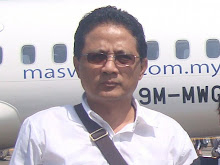Yulius Purwadi Hermawan, Bandung | Thu, 03/31/2011 9:33 AM A | A | A |-Klipping The Jakarta Post
The concepts of people-centered community, people-driven community and people-oriented community were recently coined to demonstrate the new face of ASEAN and the commitment to further deepening ASEAN integration.
The terms were introduced to respond to critiques suggesting that ASEAN constitutes an elitist organization or a state-driven community. There has been a lack of progress in developing a broad sense of popular engagement with the institution because of the lack of involvement of people, the would-be-citizens of ASEAN.
It is hard to expect a sense of ASEAN identity to emerge unless ASEAN is driven by the people, or at least until ASEAN puts them at the center of its activities.
The campaign for building a true people-to-people community has been an integral means to accelerate the realization of the ASEAN vision by 2015, particularly since 2008, when ASEAN leaders introduced a roadmap for an ASEAN community for 2009-2015. Are we realistic in dreaming of building a people-to-people community within such a short time? Is ASEAN really on the right track to becoming a community that upholds one vision and one identity?
It is not difficult to find an honest answer to those questions. Just go outside and ask anyone whether they really know about ASEAN and how well they know what ASEAN has actually done to benefit their daily lives.
Or, if you are too lazy to go outside, just browse the Internet. You will find many skeptical comments about “ASEAN people’s lack of awareness towards the variety of progress that ASEAN has made since its inception in 1967”.
It is indeed challenging for Indonesia, as ASEAN chair, to set up a more appropriate approach to accelerate the vision.
To define the steps, it is necessary to understand why there is so little concern about the ASEAN integration process while skepticism towards the achievement is so high. Many observers blame ASEAN leaders for failing to deliver concrete, tangible benefits of ASEAN to the people, regardless of various achievements ASEAN has made particularly in the last few years.
From the social perspective, we can see two major reasons why ASEAN gains only little attention from many people. First, the social interaction between people in this region remains less frequent and intense. Second, people have a very little knowledge about other people from other ASEAN state members.
The key concept of the ASEAN’s people-driven community is of course the social interaction between citizens of ASEAN member states, either individually or collectively. Unless social interactions develop, there will be no social integration. The first agenda for promoting ASEAN’s people-driven community is therefore to facilitate intense and frequent interactions between people across the region.
The social interaction first refers to so-called dyadic or face-to-face transactions involving the people directly. The intense and frequent transactions will generate a common understanding on shared values. Social interaction may help social integration between people evolve along with the development of modern transportation and communication means. In this perspective, we cannot expect to see a full social integration within the next few years.
Yet social interaction does not always refer to dyadic communication. It may become a kind of virtual transaction. Communication media is very important in this respect. Social network media has become a new forum for interactions that can be utilized to strengthen the ASEAN-imagined community.
Mass media holds a pivotal role in building the imagined community.
The provision of the information about the living dimensions of each nation that forms ASEAN would help the people in the region to identify commonalities as well as differences between themselves. Awareness of the differences that may lead to conflict can be developed. Similarly, they will uphold a faith that the commonalities enhance common understanding to further their cooperation. It is mass media’s role to provide sufficient space to enrich the ASEAN nations with broader knowledge about commonalities as well as particularistic characteristics.
In the education field, there is great opportunity for increasing interactions between the people.
Cooperation between ASEAN member states’ universities is still not well-promoted. In contrast, many universities in Indonesia have established cooperation with worldly reputable universities in Europe, Australia, Japan and the United States. Indonesian students enthusiastically participate in exchange programs at the universities rather than in Southeast Asian universities.
ASEAN obviously needs to encourage and facilitate any initiative for building closer cooperation between universities, including developing joint curriculum on Asian studies, joint publication and student exchange programs.
There are certainly many agendas that Indonesia, as chair nation of ASEAN, can do to set up conditions to accelerate the ASEAN social integration. First, Indonesia needs to convince other ASEAN leaders to work harder to actively encourage their people to get engaged with ASEAN programs and activities. ASEAN leaders should be active in facilitating the formation of forums of networks that can bring various social groups together.
Second, the Indonesian government has to prove its competence in convincing its own people that ASEAN is their sweet home where they can find peace and harmony despite embedded differences between the member countries. Of course, ASEAN’s established structure as an inter-state community should prove effective in settling the differences, including the ongoing conflict between Thailand and Cambodia.
If Indonesia succeeds in carrying out her tasks, by the end of this year, ASEAN will become a much ever-closer community in a more realistic perspective.
The writer is a full-time lecturer in the Department of International Relations, Parahyangan Catholic University, Bandung.
Subscribe to:
Post Comments (Atom)

No comments:
Post a Comment